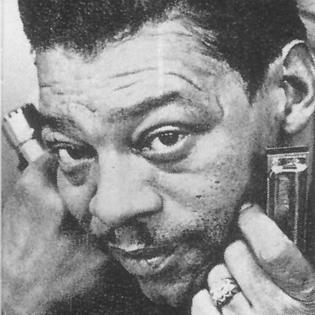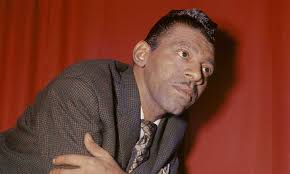Little Walter – A Complete Biography
Introduction
Little Walter (born Marion Walter Jacobs) reshaped the sound of postwar Chicago blues. With a bullet mic cupped to his harmonica and a small amp pushed into rich distortion, he turned the harp from a rhythm-coloring instrument into a lead voice as agile and fiery as a horn. His amplified phrasing, jazz-inflected lines, and studio singles for Checker/Chess set the template every modern blues harp player studies.

Childhood
Little Walter was born on May 1, 1930, in Marksville, Louisiana. He grew up in rural Louisiana (Rapides Parish), where he first picked up the harmonica and left school early. By his early teens he was traveling, busking, and soaking up regional styles across the South.
Youth
As a teenager moving through New Orleans, Memphis, and the Arkansas Delta, Walter sharpened a fluid, guitar-influenced approach to the harmonica—riff-based yet melodically daring. By the late 1940s he reached Chicago, where the electric blues scene was exploding and where he would soon anchor bands, sit in on sessions, and learn from (and compete with) the city’s best.
Adulthood
In Chicago, Walter joined Muddy Waters and Jimmy Rogers, cutting era-defining sides while crafting his own sound. In 1952 he stepped out under his own name for Checker (a Chess subsidiary), and his very first single, the instrumental “Juke,” became a smash—launching him as a headliner. Across the 1950s he issued a remarkable run of R&B chart hits marked by tight bands, urbane swing, and a signature, overdriven harmonica tone that felt both raw and sophisticated.
Major Compositions
- “Juke” (1952): A watershed instrumental that put the harmonica at center stage; it spent eight non-consecutive weeks at No. 1 on the Billboard R&B chart and remains the only harmonica instrumental ever to top that chart. Its success emboldened Walter to leave Muddy’s band and tour under his own name.
- “My Babe” (1955): Written by Willie Dixon and adapted from the gospel tune “This Train,” it logged five weeks at No. 1 on the R&B chart and became Walter’s signature vocal hit.
- Other key sides: “Off the Wall,” “Sad Hours,” and “Roller Coaster” all broke the R&B Top 10 during his hot streak, and the 1958 compilation The Best of Little Walter gathered an extraordinary run of Checker singles—ten of its 12 tracks had hit the R&B Top Ten between 1952 and 1955.
What makes these records endure isn’t only chart data but Walter’s revolutionary technique: cupping a bullet microphone, driving a small amp, and shaping the sound with tongue blocking, vibrato, and vocal-like bends, he created a vocabulary blues and rock harpists still draw from.
Death
After a second European tour, Walter became involved in a scuffle during a break at a South Side Chicago club. He returned to a friend’s apartment and died in his sleep early the next morning, on February 15, 1968. The death certificate listed coronary thrombosis, and he was buried at St. Mary’s Cemetery in Evergreen Park, Illinois.
Conclusion
Little Walter was small in stature but colossal in impact. He fused the spontaneity of jazz phrasing with the bite of electrified Chicago blues, proving the harmonica could lead a modern urban band and carry a pop single. From the first blast of “Juke” to the sleek swing of “My Babe,” his records set standards of tone, timing, and invention that shaped Junior Wells, James Cotton, Paul Butterfield, and generations more. In 2008 he entered the Rock & Roll Hall of Fame—the only inductee honored specifically as a harmonica player—a fitting acknowledgment of a singular, era-defining musician.

Comments are closed